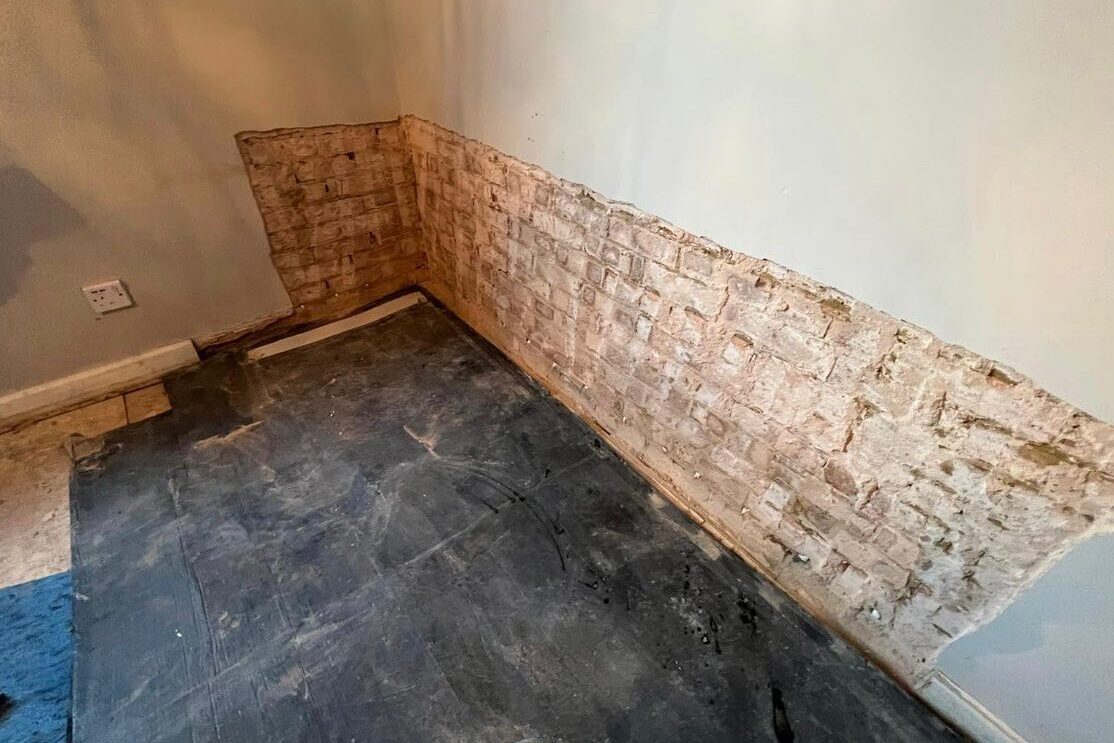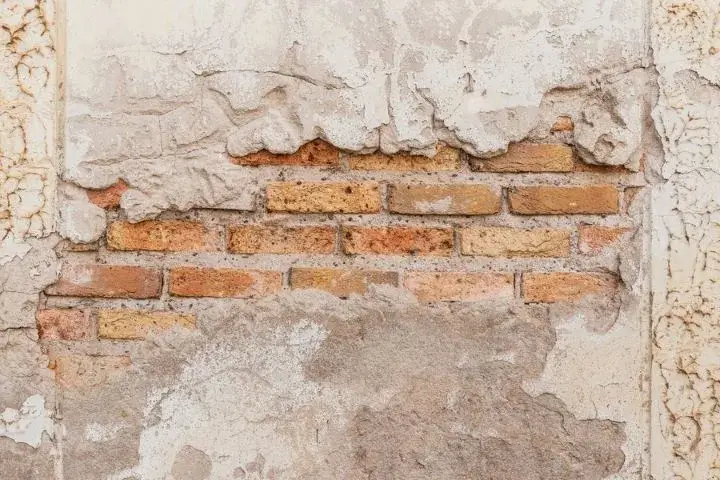What’s the difference between condensation, rising, and penetrating damp with help from damp proofing newcastle
What’s the difference between condensation, rising, and penetrating damp with help from damp proofing newcastle
Blog Article
Checking Out the Numerous Techniques and Solutions for Effective Damp Proofing
Moisture in structures postures significant difficulties to both structural honesty and interior air top quality. Various methods and remedies have arised to combat this prevalent concern. From conventional damp-proof membranes to cutting-edge chemical therapies, each technique provides distinct advantages. Recognizing these choices is necessary for efficient dampness control. Choosing the right remedy depends on details building conditions and demands, motivating additional exploration into the most reliable damp proofing techniques available.
Understanding the Root Causes Of Wetness
Although moisture can arise from different resources, recognizing these reasons is essential for reliable removal. Commonly, moisture originates from 3 primary resources: increasing damp, passing through wet, and condensation. Increasing damp takes place when groundwater travels upwards with porous products, such as brick or rock, usually because of a lack of a reliable barrier (damp proofing newcastle). Permeating damp is typically triggered by outside elements, consisting of roofing system leakages, faulty seamless gutters, or damaged wall surfaces, permitting water to penetrate a property. Condensation, on the various other hand, results from excess dampness airborne, often exacerbated by bad ventilation and temperature differences, resulting in water beads creating on surface areas. Determining these underlying concerns is necessary, as each sort of wetness requires a customized technique for remediation. Appropriate analysis assists in determining the most efficient remedies, inevitably securing the structural stability of a building and improving interior air top quality
Conventional Damp-Proof Membrane Layers

Chemical Damp-Proofing Solutions
Chemical damp-proofing services use an ingenious strategy to avoid moisture intrusion in buildings. These methods commonly entail the application of liquid chemicals that penetrate stonework and form an obstacle versus climbing moist. Generally made use of chemicals consist of silanes, siloxanes, and other water-repellent agents that respond with surface area products to develop a hydrophobic layer.The application process typically calls for exploration openings into the walls, infusing the chemical service, and enabling it to cure. This approach is especially useful for older frameworks where typical damp-proof membrane layers may be not practical. Chemical damp-proofing can be less disruptive and extra cost-effective than considerable improvement projects.While efficient, these services depend on appropriate application and ecological problems for peak efficiency. mould removal newcastle. Normal maintenance and monitoring are important to ensure the longevity of the damp-proofing therapy. Generally, chemical damp-proofing represents a versatile choice for safeguarding structures versus moisture-related damages
Cavity Wall Surface Building Methods
Dental caries wall surface building and construction techniques offer countless benefits, especially in wetness control and energy efficiency. By including an air space between two layers of masonry, these walls effectively alleviate water access while enhancing insulation. This combination not only safeguards frameworks from wetness yet also contributes to minimized power consumption.
Benefits of Dental Caries Walls
When taking into consideration efficient wet proofing approaches, the advantages of cavity wall surfaces stick out prominently. Tooth cavity walls consist of 2 separate layers, developing an air void that effectively minimizes moisture penetration. This layout lessens the threat of moisture, as the outer wall serves as a barrier versus rain and water access. Additionally, cavity wall surfaces improve thermal insulation, which adds to power effectiveness by lowering warm loss. They also supply audio insulation, assisting to produce a quieter indoor setting. Furthermore, the air gap permits air flow, which assists in moisture control and reduces the possibility of mold and mildew development. These benefits not just improve the overall comfort of a structure but likewise add to its durability and architectural honesty.
Moisture Control Methods
Efficient wetness control approaches are vital in cavity wall construction to ensure long-term security against wetness. One primary technique involves the consolidation of weep holes, which promote water drain from the tooth cavity, preventing accumulation. Additionally, using breathable membranes can help take care of dampness degrees while permitting caught vapor to run away. Appropriate placement of insulation is likewise essential, as it should not obstruct water drainage paths. In addition, guaranteeing that the external fallen leaves of the tooth cavity wall surface are constructed with water-resistant products boosts total longevity. Routine maintenance checks are vital to recognize any kind of clogs or damage early, protecting the structure's honesty. Ultimately, a combination of these techniques forms a robust defense against wetness breach in dental caries wall surfaces.
Insulation and Energy Effectiveness
Insulation plays an essential duty in enhancing power performance within cavity wall surface building and construction. By including insulating products, these wall surfaces create a thermal obstacle that reduces heat loss and lowers power usage. Reliable insulation not only aids maintain a secure indoor temperature level however additionally mitigates the danger of wetness, as it avoids condensation within the wall dental caries. Different methods, such as making use of stiff foam boards or mineral woollen, can be used to accomplish optimal insulation efficiency. Furthermore, correct installment is necessary to assure that spaces and gaps are reduced, which can otherwise endanger power efficiency. Inevitably, a well-insulated tooth cavity wall contributes substantially to total sustainability and reduces cooling and heating prices for home owners.
Exterior Damp Proofing Approaches
Exterior damp proofing techniques are necessary for securing frameworks from moisture infiltration. 2 efficient strategies website include the application of water resistant membranes and the setup of French drains pipes. These services help mitigate water accumulation and preserve the integrity of buildings.
Waterproof Membrane Layer Application
While numerous methods exist for stopping moisture ingress, the application of waterproof membranes remains a very efficient external wet proofing method. These membrane layers are typically made from products such as polyethylene, rubber, or modified bitumen, offering a robust barrier versus water penetration. The installment process entails using the membrane to the outside surface areas of foundations or walls, making certain total coverage to stop leakages. Appropriate adhesion and securing at joints are critical to making the most of performance. Waterproof membrane layers can be applied in numerous types, including fluid coverings and sheet membrane layers, enabling adaptability based on the particular requirements of the framework. This method not just protects buildings from moisture however also improves their longevity and architectural integrity.
French Drainpipe Installation
One reliable technique for managing groundwater and avoiding moisture accumulation around a structure's foundation is the setup of a French drainpipe. This drain system contains a trench full of gravel and a perforated pipe that reroutes surface water far from the structure. Correct installation needs mindful planning, making certain that the drainpipe slopes far from the structure to assist in excellent water flow. Furthermore, the place of the drain is vital; it should be placed in locations susceptible to pooling or excess moisture. Regular upkeep, consisting of clearing up debris from the crushed rock and ensuring the pipe stays unblocked, is essential for long-term performance. Inevitably, a well-installed French drainpipe can greatly minimize the risk of water-related issues in foundations and cellars.
Inside Waterproofing Techniques
Inside waterproofing approaches are crucial for shielding a building's inside from dampness infiltration and prospective water damage. These approaches normally entail the application of specific products and strategies developed to produce a dampness barrier within the structure. One typical method is using waterproof coverings or sealers on walls and floors, which stop wetness from passing through surfaces.Additionally, setting up indoor drain systems, such as sump pumps, can effectively handle water build-up in cellars and crawl spaces. An additional method involves making use of vapor barriers, which are installed to prevent wetness motion from the ground into living spaces.Moreover, resolving any cracks or gaps in walls or foundations with suitable sealants assures a thorough defense against water intrusion. By executing these interior waterproofing methods, home proprietors can considerably minimize the danger of mold development, architectural damages, and other moisture-related issues. Correct execution of these strategies is essential for lasting defense and building integrity.
Regular Upkeep and Assessment Practices
Regular upkeep and assessment methods are important for guaranteeing the lasting efficiency of damp proofing remedies in any type of building. Routine checks allow building owners to identify very early indications of moisture breach, such as peeling paint, mold and mildew growth, and musty odors. These indications can signify underlying issues that call for immediate attention.Inspections need to be carried out at the very least annually, concentrating on vulnerable areas like cellars, crawl spaces, and exterior walls. Throughout these analyses, residential or commercial property proprietors ought to check out sealants, drain systems, and air flow to verify they work correctly.Additionally, keeping gutters and downspouts is necessary, as blocked systems can result in water build-up near the structure. Implementing a routine upkeep timetable, along with prompt repair work, can substantially expand the lifespan of moist proofing procedures and shield the structural integrity of the building. Proactive measures ultimately add to the general health and wellness of the living setting.
Frequently Asked Questions
How Long Does Damp Proofing Normally Last?
The period of wet proofing performance differs, typically lasting between 20 to 50 years. Factors such as application quality, ecological problems, and maintenance methods substantially affect the longevity of the damp proofing treatment.

Can I Damp Evidence My Home Myself?
The specific considered the expediency of DIY damp proofing. With appropriate research and the ideal products, it is feasible. They additionally acknowledged the value of specialist advice to assure resilient efficiency and prevent future issues.
What Are the Indicators of Inefficient Damp Proofing?
Indications of ineffective wet proofing consist of persistent musty smells, visible mold development, peeling paint, wet spots on walls, and timber decay - mould removal newcastle. Property owners ought to address these concerns promptly to stop further damage and health worries
Does Damp Proofing Affect Indoor Air Quality?

Just How Much Does Expert Damp Proofing Price?
Professional moist proofing expenses differ significantly, typically ranging from $1,000 to $5,000 relying on the home's dimension, the extent of the moist concern, and chosen techniques. Each scenario requires a tailored evaluation for precise rates. Generally, wetness originates from 3 main resources: climbing moist, penetrating damp, and condensation. When thinking about reliable wet proofing methods, the advantages of tooth cavity walls stand out plainly. Outside wet proofing approaches are essential for safeguarding structures from wetness infiltration. While different techniques exist for protecting against dampness access, the application of water-proof membrane layers continues to be a very reliable exterior wet proofing strategy. Indications of inadequate wet proofing consist of relentless stuffy smells, noticeable mold growth, peeling paint, damp spots on wall surfaces, and timber degeneration.
Report this page